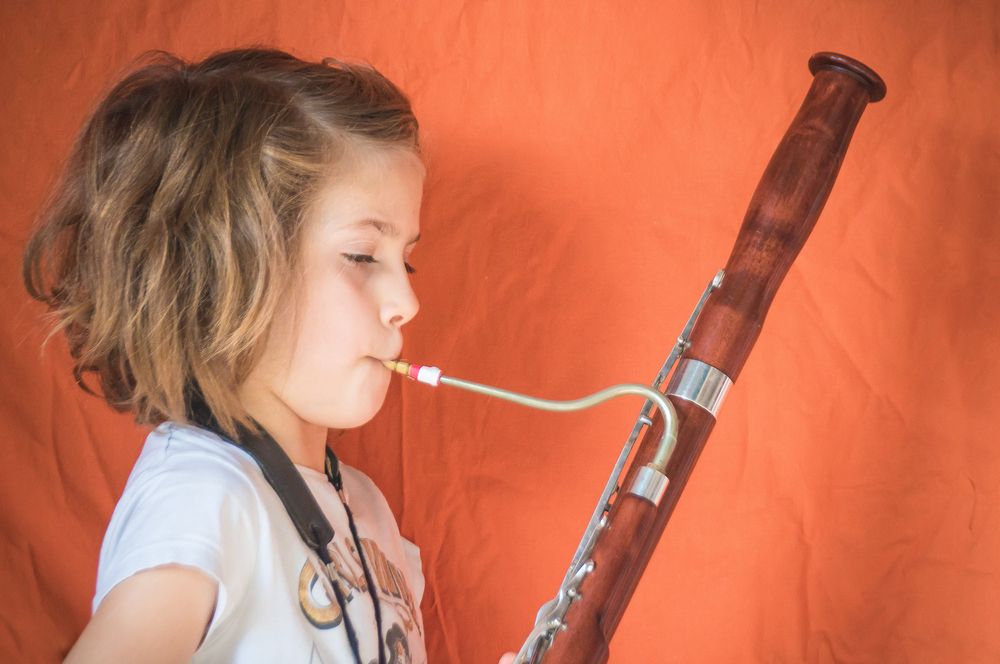10. Important Notes for Parents and Children
The size, around 1.40 meters, also brings a corresponding weight (depending on the model, up to approximately 3,500 grams). That's why the bassoon is played with a harness around the neck, like a saxophone.
Here, regarding the weight, it's crucial to consider the following:
The weight of the bassoon, supported by a regular harness, rests on just one neck vertebra. Additional strain occurs due to playing the bassoon itself, owing to the extended fingerings and techniques involved. Especially in the bass range, the mechanics demand a bit more pressure, a bit more strength. However, there are simple yet effective ways to address the weight distribution of the bassoon, like using a backpack or suspenders harness and a balance hanger.
Let's delve deeper into the harness first: To counteract the strain on just one neck vertebra, there's the option of a backpack or suspenders harness. This harness has two straps running over the shoulders and fastens over the chest. There, you'll find the regular bassoon cord with a hanger, a hook that goes into an eyelet on the boot. This optimally solves the initial weight distribution issue - the neck remains unburdened, and the shoulders easily carry the bassoon's weight.

There's still the second weight distribution aspect. The eyelet on the boot is situated around the lower third of the bassoon - meaning, when hooked onto the harness, the upper third of the instrument rests on the left arm or left hand. However, this hand should only be responsible for fingering - yet, at this moment, it's not. Because if the left hand were to release the hooked bassoon, it would tip over, with the bell leading the way, hitting the ground. To counteract this, there's the balance hanger. The balance hanger is attached with just an additional drilling at the eyelet on the boot - no problem for an instrument workshop.
The balance hanger is around 12 cm long and has three holes where the bassoon cord hook can be attached. When the hook is in the top hole, and both hands are off the bassoon, it hangs horizontally balanced. With a slight pressure from the right hand on the boot and the supporting hold of the left hand on the wing and bass joint, almost all the weight of the bassoon now rests on the shoulders. This strain is almost imperceptible, and both hands are free for mastering the challenging fingerings of the bassoon.
Determining the ideal starting age for children with the bassoon is tricky, but an age of around 10 years is quite common. What's more important is the child's physical condition.
Even though there are bassoon models with mechanisms suitable for children, consider the following:
- Does the child already have the strength to carry 3.5 kg of bassoon on their shoulders?
- Does the child have a size that fits a 1.40 m bassoon?
- Are the child's hands big enough to operate the mechanism?
If the child meets these conditions, don't forget to consult your experienced bassoon teacher for their guidance.




